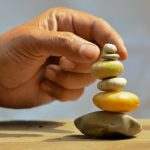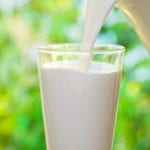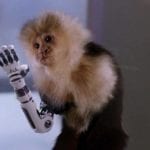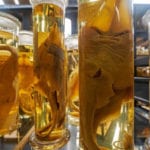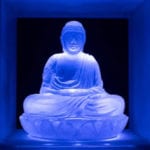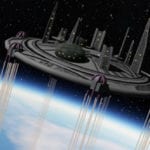 Our World
Our World  Our World
Our World  Pop Culture
Pop Culture 10 Incredible Female Comic Book Artists
 Crime
Crime 10 Terrifying Serial Killers from Centuries Ago
 Technology
Technology 10 Hilariously Over-Engineered Solutions to Simple Problems
 Miscellaneous
Miscellaneous 10 Ironic News Stories Straight out of an Alanis Morissette Song
 Politics
Politics 10 Lesser-Known Far-Right Groups of the 21st Century
 History
History Ten Revealing Facts about Daily Domestic Life in the Old West
 Weird Stuff
Weird Stuff 10 Everyday Products Surprisingly Made by Inmates
 Movies and TV
Movies and TV 10 Actors Dragged out of Retirement for One Key Role
 Creepy
Creepy 10 Lesser-Known Shapeshifter Legends from Around the World
 Our World
Our World 10 Science Facts That Will Change How You Look at the World
 Pop Culture
Pop Culture 10 Incredible Female Comic Book Artists
 Crime
Crime 10 Terrifying Serial Killers from Centuries Ago
Who's Behind Listverse?

Jamie Frater
Head Editor
Jamie founded Listverse due to an insatiable desire to share fascinating, obscure, and bizarre facts. He has been a guest speaker on numerous national radio and television stations and is a five time published author.
More About Us Technology
Technology 10 Hilariously Over-Engineered Solutions to Simple Problems
 Miscellaneous
Miscellaneous 10 Ironic News Stories Straight out of an Alanis Morissette Song
 Politics
Politics 10 Lesser-Known Far-Right Groups of the 21st Century
 History
History Ten Revealing Facts about Daily Domestic Life in the Old West
 Weird Stuff
Weird Stuff 10 Everyday Products Surprisingly Made by Inmates
 Movies and TV
Movies and TV 10 Actors Dragged out of Retirement for One Key Role
 Creepy
Creepy 10 Lesser-Known Shapeshifter Legends from Around the World
10 Experiments in Space That Seem Pointless
“Space, the final frontier,” as described by Star Trek’s opening sequence, is a place of mystery and exploration, where humans have only just begun to scratch the surface of what exists. We have sent many probes and astronauts into space to conduct experiments in our quest to understand the universe and our place in it.
Some of these experiments might prove beneficial. However, others might seem pointless in helping us to better understand our universe and the laws that govern it. So grab your astronaut ice cream, and let’s explore ten experiments in space that seem pointless…but maybe aren’t.
Related: 10 Social And Biological Experiments With Freaky Results
10 A Rose by a Different Scent
In 1998, NASA partnered with the International Flavors and Fragrances (IFF) to study the impact of microgravity on the smell of a rose. They wanted to develop a new perfume from what they hoped would be the result.
As it turns out, putting a rose into microgravity changes the number of volatile oils the rose produces. The volatile oils of a rose carry the scent of the flower. When the rose was tested in space, it produced less of the oils, which completely changed the fragrance of the rose.
IFF decided to create a new perfume called “Zen” by Shiseido Cosmetics using the findings of this experiment. After sending a rose to space, I can only imagine the IFF’s R&D bill.
9 A Tragedy’s Small Silver Lining
In 2003, the space shuttle Columbia exploded on re-entry, killing the entire crew. While cleaning up the wreckage, crews found a salvaged experiment containing nematode worms.
The worm’s survival was an important discovery because it showed that life could survive landing on another planet without being protected by a ship. It may also explain how life has spread throughout the galaxy.
Even today, nematode worms are being sent up to the International Space Station for further experiment and observation.
8 The Twins Study
What are the long-term effects of space travel? That is what researchers hope to find out with the Twins Study. NASA has been studying astronaut Mark Kelly and his identical twin brother Scott. For how smart the people at NASA are, they aren’t clever when naming their experiments.
Scott was sent to the International Space Station to spend almost an entire year in microgravity. And while Scott was floating, Mark was here on earth completing the same trials, so the 84 researchers working on this experiment could see just how much microgravity affected the human body.
Not surprisingly, since our bodies are developed to handle earth’s gravity and conditions, there were a lot of changes to Scott. Some of those changes included:
- Decreased body mass
- Changed eye shape
- Overactive immune system
- Changes in his chromosomes
Once Scott was back on earth, his body mostly recovered. Scientists are hoping to help humans handle the stress of living in space through this study, but nothing has been provided to the public on its results. I can only imagine finding astronaut twins is a tall order to meet.
7 Extreme Tether Ball
When we can put a satellite into orbit, attaching one on a 21-kilometer-long (13-mile) tether behind a shuttle doesn’t seem to make any sense to the average civilian. But that is exactly what scientists wanted and did; scientists wanted satellites to generate electricity while they were pulled through the earth’s magnetic field by a space shuttle.
Both attempts failed. The first shuttle managed to release only 840 feet of cable before jamming. The second attempt in 1996 was closer to success; the shuttle Columbia managed to release 12.2 miles of cable before it snapped, effectively slingshotting the satellite into deep space.
The tether cable was only 2.54 millimeters (1/10th of an inch) thick; surprisingly, it did well for what it was. According to NASA, the system had been generating electricity, about 3,500 volts and 0.5 amps. So it is possible to generate green energy during launch; we might just want to try a stronger and thicker cable.
6 Growing Plants in Space
Anyone who has seen the movie The Martian, starring Matt Damon, understands this experiment’s theoretical importance. If we are ever going to colonize Mars, we will need to be able to grow our own food. That really is the goal for understanding what it takes to grow fruits and veggies in space.
Remember what happened to sailors when they didn’t eat enough vitamin C. They got scurvy because they couldn’t keep fresh produce on their ships. So far, scientists haven’t grown much but a few varieties of lettuce, cabbage, kale mustard, and flowers. Eventually, scientists want to be able to grow all kinds of vegetables and fruits since even having the plants on board makes the astronauts happier.
5 The Water Walls Experiment
The Water Walls (what a unique name, huh?) experiment is designed to study how water behaves in microgravity. It involves using a water-filled “bags” system to create walls of water that astronauts can use for a wide variety of purposes.
Engineers are hoping that they might be able to replace some or all of the critical life support systems currently in use. They want to have a bag for the ship’s gray water, one for black water, another for air purification, one for edible algae, and lastly, one to shield astronauts from space radiation.
The best part is that if successful, it would dramatically reduce the mechanical and technical equipment required for today’s life support systems. The only mechanical piece on the water walls would be water pumps to move the water where it is needed.
4 Mighty Mouse Isn’t Fiction Anymore
Any experiment that starts with genetically modified “mighty mice” will spark the interest of just about anyone. The mice in the experiment were mutated to have double the muscle mass of their plain jane counterparts.
The point of the experiment was to see what effects microgravity had on muscle loss and bone mass. The results were that over 33 days in space, the genetically superior mighty mice didn’t lose any of their muscle or bone mass. At the same time, the regular space mice lost around 18% of theirs in that same time.
Scientists are hopeful that with these results, they might be able to help people both on Earth and astronauts that have to deal with muscle loss either because of disease or low gravity. According to geneticist Se-Jin Lee, we are still years away from human testing.
3 The Fire Experiment
One of the worst things that could happen on a spaceship is a fire, as it can quickly spread and destroy vital support systems. NASA’s plan to avoid that disaster is to safely light the International Space Station (ISS) on fire. Yup, you read that right.
The project has been named SoFIE, which stands for Solid Fuel Ignition and Extinction. SoFIE experiments will be carried out in the ISS’s combustion rack. Scientists hope to learn how fire spreads and acts with different materials while in low gravity, with the end goal of establishing colonies on the moon and Mars with minimal risk of fire destroying everything.
2 The Ice Crystal Experiment
The Ice Crystal experiment is designed to study how ice crystals form in space. I know what you are thinking; ice is ice—water gets cold and freezes, space is cold, end of the story. And you would be correct at the most basic level; all ice is just frozen water.
However, the way it forms and acts in space is different than what it does on Earth. Why is this important? Because it could help us find planets or other celestial objects with water and decide whether it would be possible for life to live there. Remember, water is life for us, and as far as we understand, everything else.
You’ve probably noticed that almost all the experiments have long-term space travel or colonies in mind. This is no different; if we can find objects with enough water that can support life, the galaxy will become just a little smaller.
1 The Human Genome Project
The Human Genome Project is an ongoing effort to map the entire human genome. There are around 3 billion letters held within human DNA, so understandably this experiment took years for scientists to consider a success. In 2003, after 13 years of progress, scientists completed mapping 92% of the genome and considered the project completed. After another 14 years, the human genome has been mapped in its entirety.
The project has been and continues to be important for various reasons. It has helped scientists learn more about the genetic causes of diseases, has led to the development of new and better treatments for illnesses, and has even helped us understand where human evolution is headed.
Some geneticists believe that the map of the human genome is the key to successfully saving the human race. Christopher Mason, who was the lead geneticist for the Twin Study mentioned above, believes that we will be able to use the map to modify humans and other species to handle the struggles of space exploration better.


